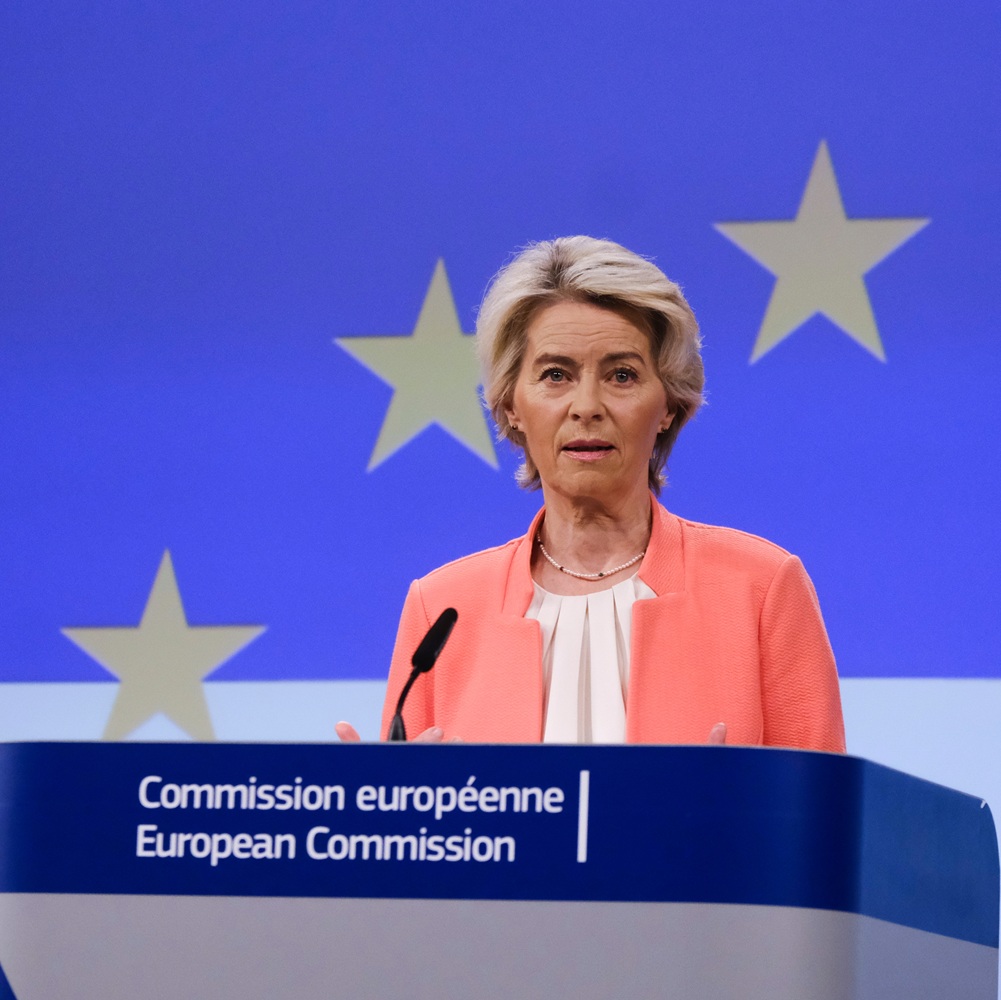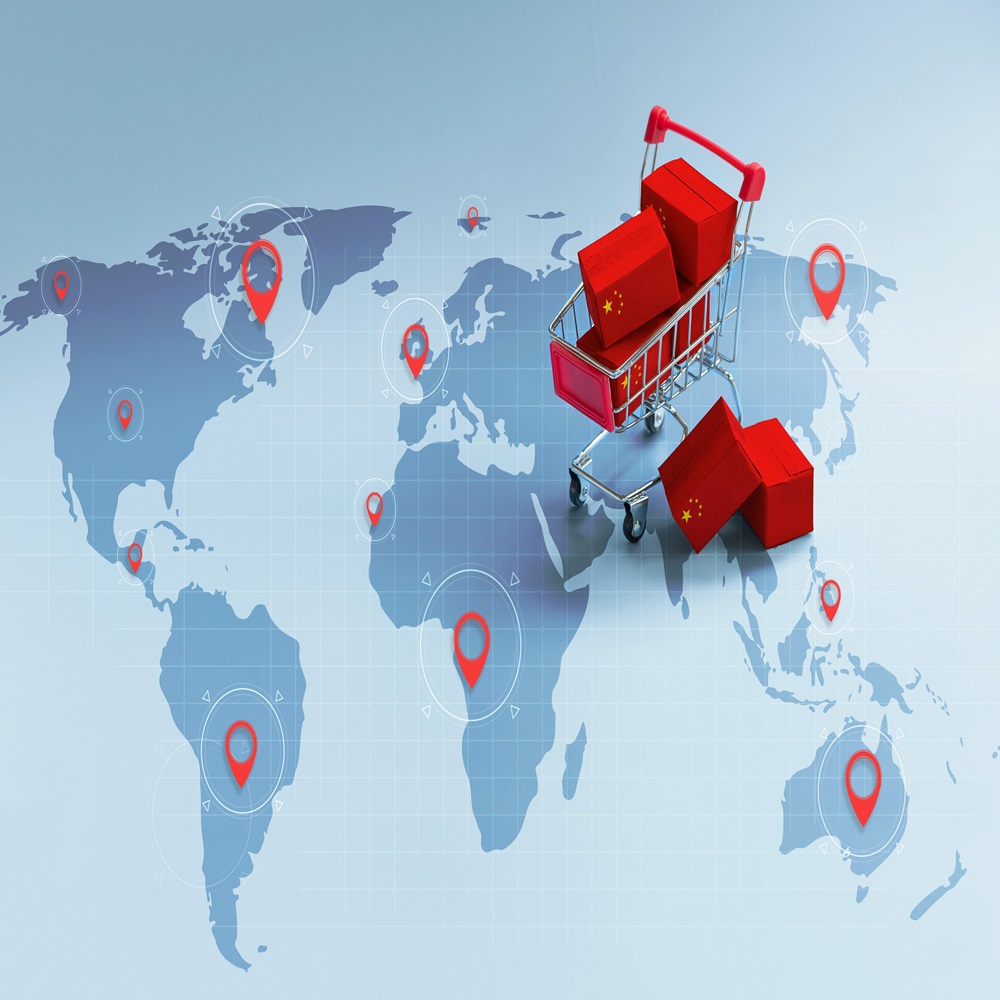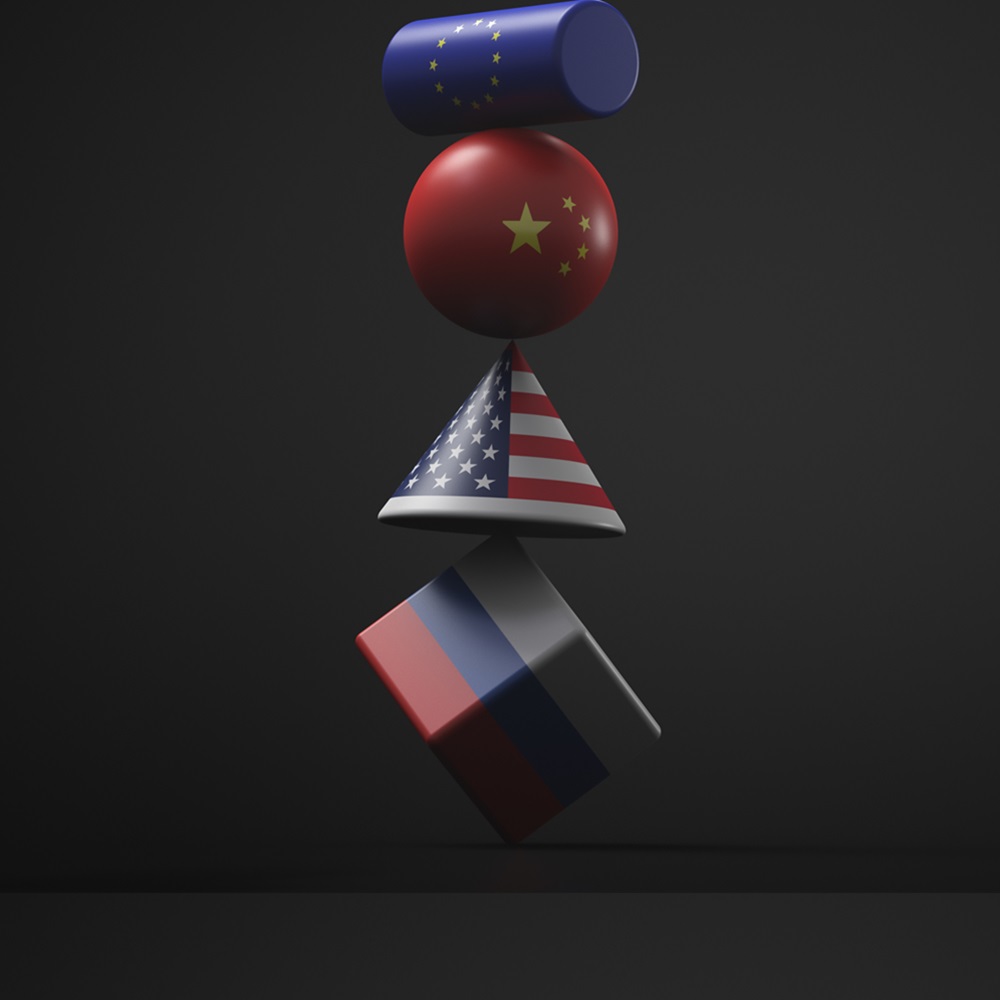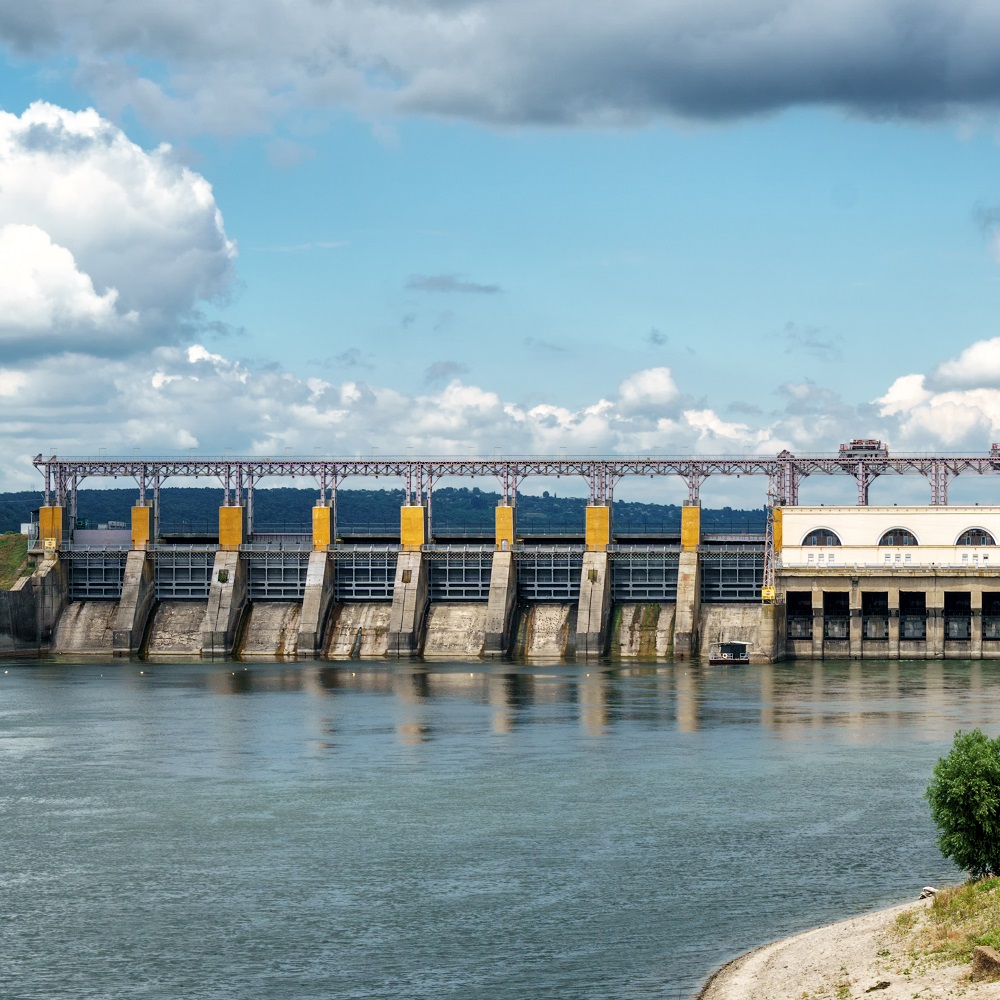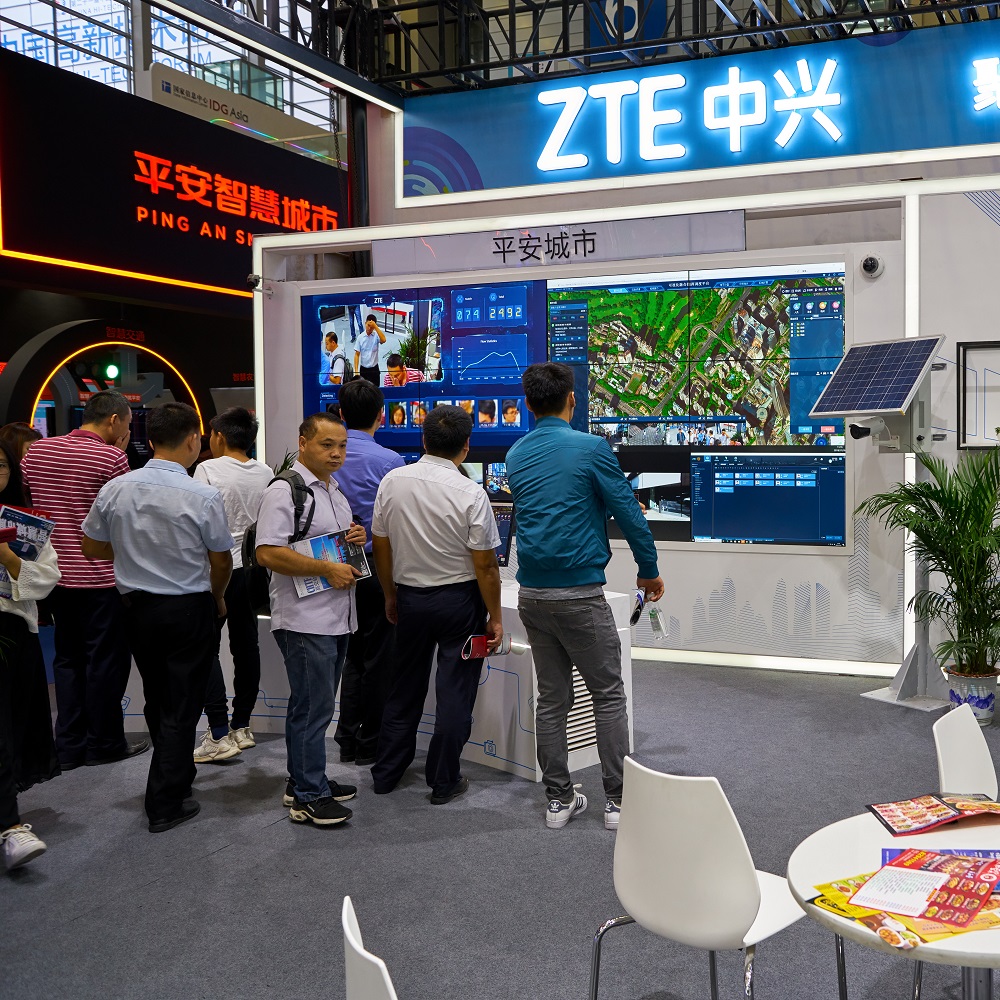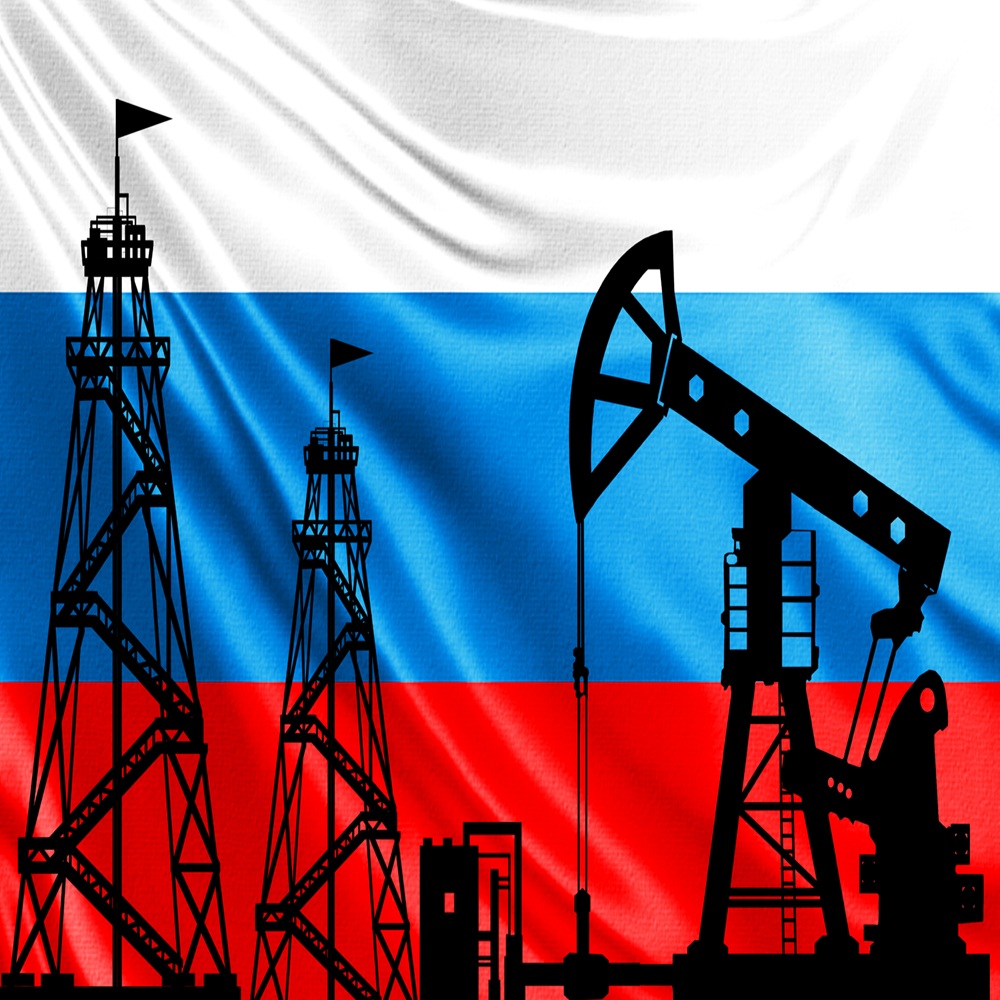
The Economic Impacts of the Ukraine War: focus on Russian Energy
by World & New World Journal Policy Team
한국어로 읽기 Leer en español In Deutsch lesen Gap اقرأ بالعربية Lire en français Читать на русском I. Introduction Russia invaded Ukraine in February 2022. As the invasion enters its third year, its most immediate and visible consequences have been loss of life and large numbers of refugees from Ukraine. However, given the interconnected structure of the international political, economic, and policy systems, the ramifications of the conflict can be felt well beyond Ukraine and Russia.Much of the recent literature and commentaries have focused on the military and strategic lessons learned from the ongoing Ukraine conflict (Biddle 2022; 2023; Dijkstra et al. 2023). However, the conflict has potentially much wider global consequences for various policy areas. Robert Jervis noted that the international system is not only interconnected but also often displays nonlinear relationships and that “outcomes cannot be understood without adding together the units or their relations.” (Jervis 1997, 6). This article focuses on the economic effects of the Ukraine war, emphasizing the energy issue, because Russia has been a major player in the global energy market. II. Literature on the effects of wars Wars have the potential to alter the parties and “transform the future” of belligerents (Ikle 1991), they also bring about fundamental changes to the international system (Gilpin 1981). Scholars in Economics have provided considerable analysis of the macroeconomic effects of a conflict across spatial levels: locally, nationally, regionally and internationally. Studies have examined the effects of specific wars such as the Syrian civil war (Kešeljević and Spruk, 2023) or the Iraq war (Bilmes and Stiglitz 2006). They have also examined the effects of war in general. For instance, Reuven Glick and Alan Taylor (2010) examine bilateral trade relations from 1870 to 1997 and find “large and persistent impacts of wars on trade, and hence on national and global economic welfare.” Similarly, Vally Koubi (2005) investigates the effects of inter- and intrastate wars on a sample of countries and finds that the combined pre-war contemporaneous and postwar effects on economic growth are negative. A “war ruin” school emphasizes that the destruction caused by wars is accompanied by higher inflation, unproductive resource spending on the military, and war debt (Chan 1985; Diehl and Goertz 1985; Russett 1970). By contrast, a “war renewal” school argued that there could be longer-term positive economic effects from war because war can lead to increased efficiency in the economy by reducing the power of rent-seeking special interests, triggering technological innovation, and advancing human capital (Olson 1982; Organski and Kugler 1980). Early analysis estimated that the Russian invasion of Ukraine had an economic cost of 1% of global GDP in 2022 (Liadze et al. 2023)Some political scientists focused on the domestic consequences of war. For example, Electoral political scientists have often examined the effects of war on public opinion. A key concern has been whether war produces a “rally around the flag effects” to bolster the support of incumbent leaders – or whether war weariness can contribute to declining support for governments, including those governments committed to conflicts abroad. John Mueller (1970) was the first scholar to develop the concept of the “rally-round-the-flag”, with later scholars identifying some of the factors that may shape or mitigate the effect (Dinesen and Jaeger 2013). Kseniya Kizilova and Pippa Norris (2023) considered any rally effects during the first few months of the Ukraine war. They claim that the reason that motivated Putin’s military invasion was an attempt to boost popular support among the Russian electorate. They show evidence of a surge in support for Putin following the invasion, which persisted longer than usual in democratic systems. However, Kizilova and Norris question whether this will likely be sustained as the economic costs of the war increase. III. Brief Summary of the Ukraine War The roots of the Ukraine war go back to the early 1990s when Ukraine declared independence from the Soviet Union. While the Ukrainian economy was still firmly tied to the Russian economy, the country shifted its political focus towards the EU and NATO. This shift culminated in the Orange Revolution 2004 and the “Euromaidan” demonstrations in 2013. Portraying the “Euromaidan” protests as a Western-backed coup, Russia invaded Crimea and declared the annexation of Crimea into Russia in March 2014. Conflict soon erupted in the Eastern regions of Donetsk and Luhansk, where Russia supported pro-Russian separatist forces (Walker 2023a). Despite attempts to negotiate a ceasefire through the Minsk Agreement I and II, the conflict in the Eastern part of Ukraine had continued (Walker 2023a), resulting in over 14,000 deaths between 2014 and 2021. Against this backdrop, on 21 February, 2022, Russia recognized the independence of Donetsk and Luhansk. Three days later, confounding most Western observer’s expectations, Russia launched a full-scale invasion of Ukraine, calling it a “special military operation”. During the initial weeks, Russia made substantial advances (CIA Fact-book 2024) but failed to take Kyiv in the face of strong Ukrainian resistance supported by Western allies. In October 2022, Russia declared the annexation of Donetsk, Luhansk, Kherson and Zaporizhzhia (even though they were not entirely under Russian control) (Walker 2023b). As of February 2025, the meeting between the US and Russia to end the war is underway. IV. The Effects of the Ukraine war The impacts of war are far-reaching and devastating. War causes immense destruction of property and loss of life. It also creates psychological trauma for those who have experienced it firsthand. War can also have long-term economic impacts, such as increased unemployment and poverty. War can also lead to the displacement of people, as we have seen the millions of refugees who have been forced to flee their homes due to conflicts. War can also have political effects, such as creating new states or weakening existing nations. It can also lead to the rise of authoritarian regimes in many post-war nations. War can also increase militarization as nations seek to protect themselves from future conflicts. Regarding the effects of the Ukraine war, Bin Zhang and Sheripzhan Nadyrov (2024) claimed that in addition to inexpressible human suffering and the destruction of infrastructure, the economic and financial damage inflicted on European countries would be profound, especially in the context of rising inflation. The positive changes due to the conflict may occur in four areas: acceleration of the Green Deal, increased European attention to defense, improved prospects for individual countries to join the European Union (EU), and the unfolding of broader Eurasian economic integration. The Ukraine war might have broader economic consequences. The supply chains may be affected because of the destruction of infrastructures and resources. War mobilization may affect the workforce and economic production. Actors in the economy may also act strategically to deploy resources elsewhere, to support the war effort or because the war has affected incentive structures or decide to cease production altogether because of expected losses. These effects can be local to geographical areas engulfed in conflict but also cause ripple effects to a broader regional area and the global economy. Trade, production, consumption, inflation, growth and employment patterns may all be influenced. Figure 1: Global implications of the Russian invasion of Ukraine for the European and World Economies. Source: Peterson K. Ozili. (2022) Ozili (2022) claimed that the scale of the Ukraine war had a negative impact on the economies of almost all countries around the world. As Figure 1 shows, the main effects of the Ukraine war on the global economy are: Rising Oil and Gas Prices – European countries import about a quarter of their oil and 40% of their natural gas from the Russian Federation. The Russian Federation is the second largest oil producer in the world and the largest supplier of natural gas to Europe. After the invasion, European oil companies will have problems getting these resources from the Russian Federation. Even before the Russian invasion, oil prices rose because of growing tensions between countries, the COVID-19 pandemic, and other factors, but remained in the $80–95 per barrel range. After the invasion, this price reached $100 and could reach $140. Natural gas prices have risen 20% since the war began. Rising gas prices can drive high inflation and increase public utility bills. Decline in production and economic growth, rising global inflation, and the cost of living are more related to the consequences of the above-mentioned factors, especially rising oil and gas prices, which lead to high inflation and, therefore, a decline in supply and demand. Impact on the global banking system: This factor’s negative effect will be felt more strongly by Russian banks and is associated with international financial sanctions. Foreign banks that will suffer significant damage from sanctions are those that have conducted large operations in the Russian Federation. The Russian Federation’s export ban and its own counter-ban on imports of foreign products disrupted the global supply chain, resulting in shortages and higher prices for imported commodities. As Ozili (2022) claimed, higher inflation is a perceived negative consequence of the Russian invasion of Ukraine. As Figure 2 shows, inflation in the EU jumped in the first month of the invasion, and the increasing trend continues. EU inflation in 2022 peaked in October and amounted to 11.5%, a historical record. However, inflation has slowly declined as energy prices have gone down. This higher inflation in Europe resulted from an increase in energy prices. As Figures 3, 4, and 5 show, energy prices in Europe skyrocketed in 2022. As Figure 3 shows, energy prices have been the most important component of inflation in the EU. Figure 2: Average inflation rate in the EU (%). Source: EurostatCreated with Datawrapper Figure 3: Main components of inflation rate in the Euro areas. Figure 4: Natural gas prices in Europe, January 2021- end 2024 Figure 5: Crude oil price, January 2020-January 2025 Source: Eurostat Created with Datawrapper As Figure 6 shows, the inflation rate in major EU countries such as Germany and France followed the pattern of EU countries in which inflation skyrocketed in 2022 and then slowly declined over time. Figure 6: Inflation rate in major EU countries. Source: Eurostat Created with Datawrapper As Ozili claimed, a lower growth rate was also a perceived negative consequence of the Russian invasion of Ukraine. As Figure 7 shows, GDP in the EU was down to 3.5 % in 2022 compared to 6.3% in 2021, and it was further down to 0.8 % in 2023 because economic stagnation and high inflation caused by the Ukraine war impacted European economies. The European Commission forecasts that the European economy will grow by 0.9 % in 2024 and 1.5% in 2025. Figure 7: Average annual GDP growth rate in EU, 1996-2025. Following the pattern of entire EU countries, growth rates in four big European countries declined in 2022 & 2023 after Russia invaded Ukraine in February 2022 and are expected to grow moderately in 2024. The growth rates in four big European countries are in Table 1 and Figures 8-11. Figure 8: Growth rate in Germany Figure 9: Growth rate in France Figure 10: Growth rate in the UK Figure 11: Growth rate in Italy Regarding the effect of the Ukraine war on the global banking system, the effect was minimal because most international financial sanctions targeted Russian banks. The sanctions, including the ban of selected Russian banks from SWIFT, only affected foreign banks with significant operations in Russia. Many foreign banks experienced losses after several Western countries imposed financial sanctions on Russian banks, the Russian Central Bank, and wealthy Russian individuals. The most affected banks were Austria’s Raiffeisenbank, Italy’s Unicredit, and France’s Société Générale. Other foreign banks recorded huge losses when they discontinued their operations in Russia. The losses were significant for small foreign banks and insignificant for large foreign banks. After almost 20 months into the full-scale war, Ukraine’s banking sector continued demonstrating remarkable resilience and functioning as the backbone of the real economy. No bank runs have occurred, and access to cash was maintained. In addition to crucial reforms since 2014, comprehensive measures by the National Bank of Ukraine and a strong level of digitalization are key reasons for the observed stability. However, a significant liquidity buffer is not only a sign of resilience. It also reveals a lack of lending. The bank loan portfolio declined by around 30% compared to pre-war levels in real terms. Regarding the impact of the Russian invasion of Ukraine on European stock markets, Figures 12 and 13 show the movement of the FTSE 100 and Euro Area Stock Market Index (EU50). As seen from Figures 12 & 13, after the Russian invasion of Ukraine in February 2022, both indices showed a noticeable decline in 2022, particularly early 2022. However, both indexes showed a noticeable rise after late 2022. Although there were ups and downs in both indices in 2023 and 2024, they show upward movement from 2023 to 2025. Figure 12: The FTSE 100 index in Europe Figure 13: Euro Area Stock Market Index (EU50) Regarding the global supply chain, military operations during the Russian invasion of Ukraine disrupted multiple sectors. In particular, Russia’s ban on exports and retaliatory ban on imports, including its refusal to allow foreign cargoes to pass through its waterways and airspace during the early phase of the invasion, disrupted the global supply chain. Regarding global supply chain disruption, this article focuses on Russian oil and gas because they are the most important Russian products that affect not only Europe but also the world. Figures 14 and 15 show a world map of the countries that exported oil and gas to Europe: the color of the country corresponds to the percentage share of the country’s exports (indicated below the Figure). In 2021, around a third of Europe’s energy came from gas (34%) and oil (31%), according to Al Jazeera’s data analysis from BP’s Statistical Review of World Energy. Europe was the largest importer of natural gas in the world. Russia provided roughly 40% and 25% of the EU’s imported gas and oil before the Russian invasion of Ukraine. As Figure 16 shows, major gas importers from Russia in 2021 were European countries. Figure 14: EU oil import sources in 2021. Figure 15: EU natural gas import sources in 2021. Source: Eurostat Figure 16: Major EU importers from Russian Gas in 2021. However, since the Russian invasion of Ukraine in 2022, more than 9,119 new economic sanctions have been imposed on Russia, making it the most sanctioned country in the world. At least 46 countries or territories, including all 27 EU nations, have imposed sanctions on Russia or pledged to adopt a combination of US and EU sanctions. The sanctions have strongly affected, resulting in a 58% decline in exports to Russia and an 86% drop in imports from Russia between the first quarter of 2022 and the third quarter of 2024 (see Figure 17). Figure 17: EU trade with Russia Russia has blamed these sanctions for impeding routine maintenance on its Nord Stream I gas pipeline which is the single biggest gas pipeline between Russia and Western Europe. In response, Russia cut its gas exports to the EU by around 80% since the Russian invasion, resulting in higher gas price in Europe, as Figure 18 shows. As a result, many European countries had to rethink their energy mix rapidly. The ripple effects of higher natural gas prices were felt in Europe and around the world. One of the most immediate consequences of Russia’s cut in gas delivery and sanctions on Russia, as well as sanctions on Russian was a sharp increase in European demand for LNG imports: in the first eight months of 2022, net LNG imports in Europe rose by two-thirds (by 45 billion cubic meters compared with the same period a year earlier). Russia’s pipeline gas share in EU imports dropped from over 40% in 2021 to about 8% in 2023. Russia accounted for less than 15% of total EU gas imports for pipeline gas and LNG combined. The drop was possible mainly thanks to a sharp increase in LNG imports and an overall reduction in gas consumption in the EU. Figure 18: Natural gas price in Europe, January 2021- December 2024 Figure 19 shows how gas supply to the EU changed between 2021 and 2023. Import from Russia declined from over 150 billion cubic meters (bcm) in 2021 to less than 43 bcm. This was mainly compensated by a growing share of other partners. Import from US grew from 18.9 bcm in 2021 to 56.2 bcm in 2023. Import from Norway grew from 79.5 bcm in 2021 to 87.7 in 2023. Import from other partners increased from 41.6 bcm in 2021 to 62 bcm in 2023. Source: https://www.consilium.europa.eu/en/infographics/eu-gas-supply/#0) Figure 19: Major EU import sources of Gas. However, as Figure 20, shows the EU’s import from Russian gas increased in volume in 2024. Figure 20: EU trade of natural gas with Russia EU imports of Russian petroleum oil also dropped. Russia was the largest provider of petroleum oil to the EU in 2021. After Russia's invasion of Ukraine, a major diversion in the trade of petroleum oil took place. In the third quarter of 2024, the volume of petroleum oil in the EU imported from Russia was 7% of what it had been in the first quarter of 2021 (see Figure 21) while its value had dropped to 10% in the same period. The EU’s share of petroleum oil imports from Russia dropped from 18% in the third quarter of 2022 to 2% in the third quarter of 2024 (see Figure 22). The shares of the United States (+5 pp), Kazakhstan (+4 pp), Norway (+3 pp), and Saudi Arabia (+2 pp) increased in this period. The U.S. and Norway became the EU’s no.1 and no.2 petroleum oil providers, respectively. Figure 21: EU trade of petroleum oil with Russia Figure 22: EU’s leading petroleum oil providers The EU’s de-Russification policy has successfully reduced the EU’s dependence on Russian energy. However, the EU’s de-Russification policy allowed Russian fossil fuels to flow into other regions. The Centre for Research on Energy and Clean Air (CREA), a think-tank in Finland, compiles estimates of the monetary value of Russian fossil fuels procured by each country and region (Figure 23). Figures 23 & 24 show the countries that imported Russian coal, oil and gas since Russia’s invasion of Ukraine. China has been no. 1 country that imported Russian fossil fuels most, followed by India, Turkey, and the EU. Asian countries such as Malaysia, South Korea, Singapore, and Japan are among the major importers of Russian fossil fuels. Figure 23: Value of Russian fossil fuels purchase (January 1, 2023 to January 24, 2024) Figure 24: Largest importers of Russian fossil fuels (January 1, 2023 to February 16, 2025) Moreover, according to Statista, value of fossil fuel exports from Russia from February 24, 2022 to January 27, 2025, by country and type is as follows as Figure 25 shows. China have been no. 1 country that imported Russian fossil fuels most, followed by India, Turkey, Germany, Hungary, Italy, and South Korea. Figure 25: value of fossil fuel exports from Russia from February 24, 2022 to January 27, 2025, by country and type. However, Figures 23, 24, and 25 show some differences among major importers of Russian fossil fuels. China, India, and Turkey imported more Russian oil than gas or coal, while EU imported more Russian gas than oil or coal. Interestingly, South Korea imported more Russian coal than oil or gas. If we focus on Russian oil, we know that China and India’s imports of Russian oils significantly increased, as shown in Figures 26, 27, and 28. Since the EU imposed its embargo on Russian crude oil shipments, China purchased the most from Russia, at EUR 82.3 billion, followed by India and Türkiye, at EUR 47.0 billion and EUR 34.1 billion, respectively. The EU came in fourth, with oil and gas imports continuing mainly through pipelines to Eastern Europe. Notably, the oil-producing countries of Saudi Arabia and the United Arab Emirates (UAE) purchased oil (crude oil and petroleum products) from Russia. Figure 26: Russian Oil Exports, by country and region, 2021-2024. (Navy blue: EU, Blue: US & UK, Light green: Turkey, Green: China, Yellow: India, Orange: Middle Eastern nations) Since the advent of the Ukraine crisis, China and India have been increasing the amount of crude oil they imported from Russia. According to statistics compiled by China’s General Administration of Customs, as Figure 27 shows, monthly imports increased from 6.38 million tons in March 2022 to 10.54 million tons in August 2023. Annual imports in 2023 exceeded 100 million tons for the first time. Figure 27: China’s monthly crude oil imports from Russia (2021 to 2023) As Figure 28 shows, India, which historically imported little crude oil from Russia, rapidly increased its imports partly due to the close geographical distance since the Russian invasion of Ukraine. According to statistics compiled by India’s Ministry of Commerce and Industry, its imports of Russian crude oil increased from March 2022 onward, with the total amount imported during 2022 exceeding 33 million tons. Crude oil imports from Russia grew into 2023, with monthly imports in May 2023 reaching a record-high level of 8.92 million tons. Annual crude oil imports from Russia in 2023 were expected to be at least 80 million tons. Figure 28: India’s monthly crude oil imports from Russia (January 2021 to November 2023) In conclusion, after EU ban on Russia until January, 2025, the biggest buyers of Russia’s fossil fuels are as follows as Figure 29 shows: China has been no. 1 country that imported Russian coal, and crude oil the most, while the EU has been the largest importer of Russian Gas, both pipeline and LNG. Figure 29: Which country bought Russia’s fossil fuels after EU ban until January 2025 Still, although the EU has significantly reduced gas imports from Russia since Russia’s invasion of Ukraine, the EU still is no. 1 importer of Russian gas. However, China replaced EU as the biggest buyer of Russian crude oil. China is also the biggest buyer of Russian coal. Data from January 1, 2022 to January 1, 2025 show how Russian fossil fuels have flowed by geography as Figure 30 shows. The flows of Russian energy to EU have significantly declined, while the supply of Russian energy to China, India, and Turkey has significantly increased. Figure 30: The flows of Russian energy to regions Despite the EU’s restrictions on Russian-sourced energy, Russia has maintained a substantial revenue level by selling it to other countries. As Figure 31 shows, Russian energy revenues have somewhat declined between January 2022 and January 2025. Russian energy export revenue was a little less than 750 million Euro in January 2025 compared to 1000 million Euro in January 2022 just before the Russian invasion of Ukraine. However, considering that Russia’s total oil and gas revenues were 72.6 billion dollars in 2020, 122.9 billion in 2021, 169.5 billion in 2022, and 102.8 billion in 2023 and that 2022 was the best year for energy revenues in recent years, Russian energy revenues after the Russian invasion of Ukraine in February 2022 was not insufficient. This in turn has blunted the effectiveness of the sanctions imposed by the West. Figure 31: Russian energy export revenue between 2022 and 2025. V. Conclusion This article examined the economic effects of the Ukraine war based on the argument of Ozili (2022). This article investigated four economic aspects (Inflation, economic growth, global banking, and global supply chain) on which the Ukraine war has had impacts. This article focused on Europe and the global supply chain because Russia and Ukraine were parts of Europe and because Russian energy has had a significant impact on Europea and all around the world. This article showed that the Ukraine war significantly affected European inflation, economic growth, stock markets, and energy markets while the war had minimal impact on global banking. However, this article showed that the economic effects of the Ukraine war on inflation, economic growth, stock markets, and energy markets in Europe were short-term. The oil and gas prices in Europe skyrocketed in 2022 and then declined slowly and continuously. In addition, growth in Europe declined in 2022 & 2023 after Russia invaded Ukraine in 2022 and energy prices jumped up. However, European countries grew moderately in 2024 and are expected to increase in 2025. The same thing happened to European stock markets. The FTSE 100 and Euro Area Stock Market Index (EU50) showed a noticeable decline in 2022, in particularly early 2022. However, both indices showed a noticeable rise after late 2022. On the other hand, after Russia invaded Ukraine, European countries significantly reduced imports of Russian fossil fuels. The EU’s de-Russification policy allowed Russian fossil fuels to flow into other regions. After EU’s imposition of sanctions on Russian energy, Russian fossil fuels mainly went to Asian and Middle East markets, mainly to China, India, and Turkey. China has been no. 1 country that imported Russian fossil fuels the most, followed by India and Turkey. China, India, and Turkey imported more Russian oil than gas or coal, while South Korea have imported more Russian coal than oil or gas. References Addison, Paul. 1975. The Road to 1945: British Politics and the Second World War. London: Cape.Akarsu, Mahmut Zeki, and Orkideh Gharehgozli. 2024. “The Impact of the Russia-Ukraine Waron European Union Currencies: A High-Frequency Analysis.” Policy Studies 45 (3-4): 353–376.Alden, Chris. 2023. “The International System in the Shadow of the Russian War in Ukraine.” LSE Public Policy Review 3 (1): 16, 1–8. https://doi.org/10.31389/lseppr.96.Allais, O., G. Fagherazzi, and J. Mink. 2021. “The Long-run Effects of War on Health: Evidence from World War II in France.” Social Science & Medicine 276: 113812. https://doi.org/10.1016/j.socscimed.2021.113812.Anderton, Charles H., and John R. Carter. 2001. “The Impact of War on Trade: An Interrupted Times-Series Study.” Journal of Peace Research 38 (4): 445–457. https://doi.org/10.1177/0022343301038004003.Anicetti, Jonata. 2024. “EU Arms Collaboration and Procurement: The Impact of the War in Ukraine.” Policy Studies 45 (3-4): 443–466.Baumgartner, Frank R., and Bryan D. Jones. 1993. Agendas and Instability in American Politics. Chicago: University of Chicago Press.BBC. 2024. “What are the Sanctions on Russia and Have They Affected its Economy?” February 23,2024. https://www.bbc.co.uk/news/world-europe-60125659.Beyerchen, Alan. 1992. “Clausewitz, Nonlinearity, and the Unpredictability of War.” International Security 17 (3): 59–90. https://doi.org/10.2307/2539130. POLICY STUDIES 277Biddle, Stephen D. 2022. “Ukraine and the Future of Offensive Maneuver.” War on the Rocks. November 22. https://warontherocks.com/2022/11/ukraine-and-the-future-of-offensive-maneuver/.Biddle, Stephen D. 2023. “Back in the Trenches: Why New Technology Hasn’t Revolutionized Warfare in Ukraine.” Foreign Affairs 102 (5): 153–164.Bilmes, Linda, and Joseph E. Stiglitz. 2006. The Economic Costs of the Iraq War: An Appraisal Three Years After the Beginning of the Conflict. Cambridge, MA: National Bureau of Economic Research.Black, Jeremy. 2009. War: A Short History. London: Continuum.Boungou, Whelsy, and Alhonita Yatié. 2024. “Uncertainty, Stock and Commodity Prices Duringthe Ukraine-Russia War.” Policy Studies 45 (3-4): 336–352.Brands, Hal, ed. 2023. The New Makers of Modern Strategy: From the Ancient World to the DigitalAge. Princeton: Princeton University Press.Brantly, Aaron F. 2024. “Forged in the Fires of War: The Rise of a New Ukrainian Identity.” Policy Studies 45 (3-4): 377–401.Chan, Steve. 1985. “The Impact of Defense Spending on Economic Performance: A Survey of Evidence and Problems.” Orbis 29 (2): 403–434.CIA Factbook. 2024. “Ukraine.” https://www.cia.gov/the-world-factbook/countries/ukraine/.Costalli, S., L. Moretti, and C. Pischedda. 2017. “The Economic Costs of Civil War: Synthetic Counterfactual Evidence and the Effects of Ethnic Fractionalization.” Journal of Peace Research 54 (1): 80–98. https://doi.org/10.1177/0022343316675200. Council of the European Union. 2024. “EU Enlargement Policy.” https://www.consilium. europa.eu/en/policies/enlarge ment /#Candidates.CPA (Centre for Preventive Action). 2024. “War in Ukraine.” Council on Foreign Relations, Global Conflict Tracker, February 9, 2024. https://www.cfr.org/global-conflict-tracker/conflict/conflict-ukraine.de Jong, Moniek. 2024. “Wind of Change: The Impact of REPower EU Policy Reforms on Gas Security.” Policy Studies 45 (3-4): 614–632.Dijkstra, Hyllke, Myriam Dunn Cavelty, Nicole Jenne, and Yf Reykers. 2023. “What We GotWrong: The War Against Ukraine and Security Studies.” Contemporary Security Policy 44(4): 494–496. https://doi.org/10.1080/13523260.2023.2261298.The Economist. 2023. “Russians Have Emigrated in Huge Numbers since the War in Ukraine.” August 23, 2023. https://www.economist.com/graphic-detail/2023/08/23/russians-have-emigrated-in-huge-numbers-since-the-war-in-ukraine.The Economist. 2024. “How Many Soldiers Have Died in Ukraine?” February 24, 2024. https://www.economist.com/graphic-detail/2024/02/24/how-many-russian-soldiers-have-died-in-ukraine.Égert, Balázs, and Christine de la Maisonneuve. 2024. “The Impact of the War on Human Capitaland Productivity in Ukraine.” Policy Studies 45 (3-4): 282–292.El Bilali, Hamid, and Tarek Ben Hassen. 2024. “Disrupted Harvests: How the Conflict in Ukraine Influence Global Food Systems – A Systematic Review.” Policy Studies 45 (3-4): 310–335.Gilpin, Robert. 1981. War and Change in World Politics. New York: Cambridge University Press. Glick, Reuven, and Taylor M. Alan. 2010. “Collateral Damage: Trade Disruption and the Economic Impact of War.” The Review of Economics and Statistics 92 (1): 102–127.Heathorn, Stephen. 2005. “The Mnemonic Turn in the Cultural Historiography of Britain’s GreatWar.” The Historical Journal 48 (4): 1103–1124. https://doi.org/10.1017/ S0018246X 05004930.Hegarty, Stephanie. 2022. “How Can Ukraine Export its Harvest to the World?” BBC, May 22. Ichino, Andrea, and Rudolf Winter-Ebmer. 2004. “The Long-Run Educational Cost of World War II.” Journal of Labor Economics 22 (1): 57–87. https://doi.org/10.1086/380403.Iklé, Fred C. 1991. Every War Must End. New York: Columbia University Press.Ivanova, Anna, and Paul Theirs. 2024. “Conflict Disruptions of Epistemic Communities: Initial Lessons from the Impact of the Russian Invasion of Ukraine.” Policy Studies 45 (3-4): 551–572.Jelínková, Marie, Michal Plaček, and František Ochrana. 2024. “The Arrival of Ukrainian Refugees as an Opportunity to Advance Migrant Integration Policy.” Policy Studies 45 (3-4): 507–531.Jervis, Robert. 1997. System Effects: Complexity in Political and Social Life. Princeton: Princeton University Press.Kang, Seonjou, and James Meernik. 2005. “Civil War Destruction and the Prospects for Economic Growth.” The Journal of Politics 67: 88–109. https://doi.org/10.1111/j.1468-2508.2005.00309.x.Kešeljević, Aleksandar, and Rok Spruk. 2023. Estimating the Effects of Syrian Civil War. Empirical Economics. Kizilova, Kseniya, and Pippa Norris. 2023. “Rally Around the Flag” Effects in the Russian–Ukrainian War.” European Political Science, https://doi.org/10.1057/s41304-023-00450-9.Koubi, Vally. 2005. “War and Economic Performance.” Journal of Peace Research 42: 67–82. https://doi.org/10.1177/0022343305049667.Kurnyshova, Yuliia. 2024. “Chains of Insecurities: Constructing Ukraine’s Agency in Times of War.” Policy Studies 45 (3-4): 423–442.Landay, Jonathan. 2023. “U.S. Intelligence Assesses Ukraine War has Cost Russia 315,000 Casualties –Source.” Reuters, December 12, 2023. https://www.reuters.com/world/us-intelligence-assesses-ukraine-war-has-cost-russia-315000-casualties-source-2023-12-12Levy, Jack. 1998. “The Causes of War and the Conditions of Peace.” Annual Review of Political Science 1: 139–165. https://doi.org/10.1146/annurev.polisci.1.1.139.Levy, Jack S. 2014. War in the Modern Great Power System 1495–1975. Lexington: University Press of Kentucky.Levy, Jack S., and William R. Thompson. 2010. Causes of War. Malden, MA: Wiley-Blackwell.Liadze, Iana, Corrado Macchiarelli, Paul Mortimer-Lee, and Patricia Sanchez Juanino. 2023.“Economic Costs of the Russia-Ukraine War.” The World Economy 46: 874–886. https://doi.org/10.1111/twec.13336.POLICY STUDIES 279Mader, Matthias. 2024. “Increased Support for Collective s in Times of Threat: European Public Opinion Before and After Russia’s Invasion of Ukraine.” Policy Studies 45 (3-4): 402–422.Mahoney, J. 2015. “Process Tracing and Historical Explanation.” Security Studies 24 (2): 200–218.https://doi.org/10.1080/09636412.2015.1036610.Mann, Michael. 1988. States, War & Capitalism. Oxford: Basil Blackwell.Masters, Jonathan. 2023. “Ukraine: Conflict at the Crossroads of Europe and Russia.” Council on Foreign Relations, February 14, 2023. https://www.cfr.org/backgrounder/ukraine-conflict-crossroads-europe-and-russia#chapter-title-0-4.Mosse, George L. 1994. Fallen Soldiers: Reshaping the Memory of the World Wars. Oxford: Oxford University Press. Mueller, John E. 1970. “Presidential Popularity from Truman to Johnson.” American Political Science Review 64 (1): 18–34.Murray, S. 2017. “The “Rally-‘Round-the-Flag” Phenomenon and the Diversionary Use of Force.” In Oxford Research Encyclopedia of Politics. New York: Oxford University Press.Nizhnikau, Ryhor, and Arkady Moshes. 2024. “The War in Ukraine, the EU’s Geopolitical Awakening and Implications for the “Contested Neighborhood.” Policy Studies 45 (3-4):489–506.Noll, Andreas. 2022. “What You Need to Know about the Ukraine-Russia Crisis.” DW, February 2, 2022, https://www.dw.com/en/how-the-ukraine-russia-crisis-reached-a-tipping-point/a-60802626.Nussbaum, Martha C. 2011. Creating Capabilities: The Human Development Approach. Cambridge, MA: Harvard University Press.OHCHR (Office of the UN High Commissioner for Human Rights). 2022a. “Conflict-related Civilian Casualties in Ukraine.” January 27, 2022.OHCHR (Office of the UN High Commissioner for Human Rights). 2022b. “UN Commission Concludes that War Crimes Have Been Committed in Ukraine, Expresses Concern about Suffering of Civilians.” September 23, 2022, https://www.ohchr.org/en/press-releases/2022/10/un-commission-concludes-war-crimes-have-been-committed-ukraine-expresses, last accessed27/2/2024.OHCHR (Office of the UN High Commissioner for Human Rights). 2024. “Two-Year Update. Protection of Civilians: Impact of Hostilities on Civilians since 24 February 2022.” https://www.ohchr.org/sites/default/files/2024-02/two-year-update-protection-civilians-impact-hostilities-civilians-24.pdf.Orenstein, M. A. 2023. “The European Union’s Transformation After Russia’s Attack on Ukraine. “Journal of European Integration” 45 (3): 333–342. https://doi.org/10.1080/ 07036337.2023.2183393.Organski, A. F. K., and Jacek Kugler. 1980. The War Ledger. Chicago: University of Chicago Press.O’Shea, Paul, and Sebastian Maslow. 2024. “Rethinking Change in Japan’s Security Policy: Punctuated Equilibrium Theory and Japan’s Response to the Russian Invasion of Ukraine.” Policy Studies 45 (3-4): 653–676.Ozili, P.K., 2022, Global Economic Consequence of Russian Invasion of Ukraine. Available online at: https://ssrn.com/abstract=4064770(open in a new window) Pennisi di Floristella, Angela, and Xuechen Chen. 2024. “Strategic Narratives of Russia’s War in Ukraine: Perspectives from China.” Policy Studies 45 (3-4): 573–594.Rosen, Stephen Peter. 2005. War and Human Nature. Princeton: Princeton University Press.Rosina, Matilde. 2024. “Migration and Soft Power: The EU’s Visa and Refugee Policy Response to the War in Ukraine.” Policy Studies 45 (3-4): 532–550.Russett, Bruce. 1970. What Price Vigilance? The Burdens of National Defense. New Haven: Yale University Press.Sakwa, Richard. 2014. Frontline Ukraine: Crisis in the Borderlands. London: Bloomsbury Publishing.Sarkees, Meredith R., and Frank Wayman. 2010. Resort to War 1816–2007. Washington: CQ Publishing.Sim, Li-Chen. 2024. “The Arab Gulf States in the Asian Energy Market: Is the Russia-Ukraine Wara Game Changer?” Policy Studies 45 (3-4): 633–652.Slone, M., and S. Mann. 2016. “Effects of War, Terrorism and Armed Conflict on Young Children: A Systematic Review.” Child Psychiatry & Human Development 47 (6): 950–965. https://doi.org/10.1007/s10578-016-0626-7.Stockemer, Daniel. 2023. “The Russia-Ukraine War: A Good Case Study for Students to Learn and Apply the Critical Juncture Framework.” Journal of Political Science Education, 1–14. https://doi.org/10.1080/15512169.2023.2286472.Strachan, Hew, ed. 2014. The Changing Character of Warfare. Oxford: Oxford University Press.Sullivan, Becky. 2022. “Russia’s at War with Ukraine. Here’s How We Got Here.” NPR, February24. https://www.npr.org/2022/02/12/1080205477/history-ukraine-russia.Teremetskyi, Vladyslav, Volodymyr Valihura, Maryna Slatvinska, Valentyna Bryndak, and Inna Gutsul. 2024. “Tax Policy of Ukraine in Terms of Martial law.” Policy Studies 45 (3-4): 293–309.Thakkar, Chirayu. 2024. “Russia-Ukraine War, India, and US Grand Strategy: Punishing or Leveraging Neutrality?” Policy Studies 45 (3-4): 595–613.Thompson, William R. 1993. “The Consequences of War.” International Interactions 19 (1-2): 125–147. https://doi.org/10.1080/03050629308434822.Tilly, Charles. 1992. Coercion, Capital and European States. AD 990–1992. Oxford: Blackwell.Trebesch, Christoph, Arianna Antezza, Katelyn Bushnell, Pietro Bomprezzi, Yelmurat Dyussimbinov, Andre Frank, Pascal Frank, et al. 2024. “The Ukraine Support Tracker: Which Countries Help Ukraine and How?” Kiel Working Paper 2218: 1–75.Vasquez, John A. 2009. The War Puzzle Revisited. New York: Cambridge University Press.Vilpišauskas, Ramūnas. 2024. “Gradually and Then Suddenly: The Effects of Russia’s Attacks on the Evolution of Cybersecurity Policy in Lithuania.” Policy Studies 45 (3-4): 467–488.von Clausewitz, Carl. 1976. On War. Edited and translated by Michael Howard and Peter Paret. Princeton: Princeton University Press.Walker, Nigel. 2023a. “Conflict in Ukraine: A Timeline (2014-eve of 2022 Invasion).” House of Commons Library: Research Briefing, August 22, 2023. https://commonslibrary. parliament.uk/research-briefings/cbp-9476/.Walker, Nigel. 2023b. “Conflict in Ukraine: A Timeline (Current Conflict, 2022-Present).” House of Commons Library: Research Briefing, October 18, 2023. https://commonslibrary. parliament.uk/research-briefings/cbp-9476/.POLICY STUDIES 281












